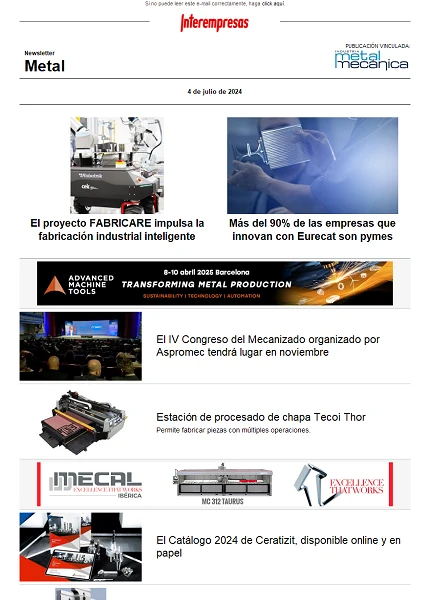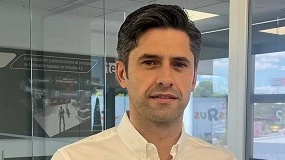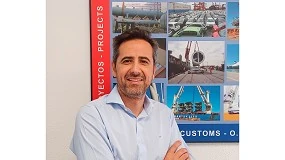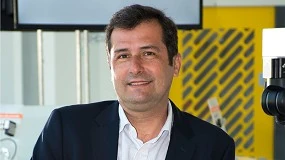Industrial Ethernet: the comparison gives confidence
October 9, 2008
High hopes in automation
Thanks to its great expansion in the area of information technology, Ethernet also has enormous potential to increase production and reduce costs in the automatic application of the industry. In general, the Ethernet technology enables higher performance, more speed in data transfer and a higher quality in production processes. This being the case, why Ethernet not be used in all industrial applications today?
For many years, Ethernet has been used for systems of control network, management systems and production cells, but not on devices that are within the machines and current teams. In these areas will continue to use other field bus technologies. In this case, it is necessary to communicate through a paserela, which makes that they go the time of conversion between different protocols. So far, the standardization of Ethernet from the level of Internet to the low level of actuators and sensors control has failed because of the supposed complexity, the limited availability of the devices and the current demands of the processes in real time.
Later, they have introduced lots of variants of Ethernet for industry and discussed how it works in journals. This proliferation comes primarily by the different technical approaches that make possible that Ethernet is able to handle real-time applications. Another of the reasons for this variety is the attempt of many manufacturers of tying customers to their network in the long term. It is common in these discussions who forget to address issues such as the ease of implementation underway, compliance, interoperability, the opening to future developments, long-term availability, the independence of a manufacturer and global distribution instead of the always quoted speed of transfer and technical properties. This article will provide an overview to the four most famous systems currently bearing in mind the above points.

PROFInet: enormously complex
PROFInet is managing and developing by the Profibus user Siemens-sponsored organization. As a direct evolution of PROFIbus, is supposed to be Ethernet technology capable of handling all areas present in the level of sensors and actuators. Up to three different types of specifications for PROFInet are designed to meet different requirements:
· PROFInet (formerly V1) for applications that do not require working in real time.
· PROFInet RT (formerly V2 or SRT) for moderate demands of real time.
· PROFInet IRT (formerly V3) for demanding real-time control applications.
The first two variants can be implemented using conventional Ethernet components and devices. On the other hand, the IRT version needs new components to transfer the data in real time with a precision of the microsecond.
PROFInet transfers the data of cyclic form and reserve for both isochronous and asynchronous data communication channels. The paths of communication for time critical data are released isócrona way exactly at the preset time inside the network. Then the information is exchanged in accordance with the direction, as in the case of the "switched Ethernet".
The available Ethernet switching components do not resemble the time controlled for isochronous channels of communication and should be replaced by a few switches for PROFInet from Siemens ASICs. These components (the Ertec 200 and the Ertec 400) has only recently entered the market.
In order to make an appropriate global application, first there is that expect that technology will be consolidated and demostre be reliable. The complex switching between the communication of controlled time and controlled direction does not correspond to any standardized procedure and requires a support of local software and tools for testing and special analysis tools. For future and faster (GB) Ethernet variants is necessary to the development of new switch ASICs. In addition to the costs of these special components, all the devices and switches, take into account the cost of the software and licenses.
Sensors and actuators of low-cost providers will not be able to justify such costs.
In summary, PROFInet seeks a very universal approximation that will lead it to a very high degree of complexity that will have impact on a high price.
EthernetI/P: the guru wanted the network
Rockwell Automation and the ODVA (Open DeviceNet Vendor Association) are those who are behind Ethernet/IP. IP makes no reference to the well-known Protocol Internet (Internet Protocol), but the term 'Industrial Protocol' (industrial Protocol) something which can lead to confusion. The core of EthernetI/P is the CIP (Common Industrial Protocol) which is already present in the technologies of DeviceNet and ColntrolNet buses. Already you are currently using in applications of time condition. In order to penetrate the area of applications of highly dynamic control systems has developed a variant of this Protocol with the name of CIPsync.
CIPsync makes sure that all stations in the network work isócrona and real time data are exchanged between them when necessary. The management of the synchronization is carried out by clocks distributed in each of the devices as it defines the Protocol of IEEE 1588 synchronisation. The extremely precise timing, as necessary to control applications, requires special hardware clocks. The clock of the device marks each of the messages with the attribute of the time. This makes it possible to clearly specify when they have to read the entries and that time must execute orders.
The procedure based on the IEEE does not guarantee that the data is transferred at the right time. In time critical messages are assigned a higher priority and they are first on the network. As a result, all the other messages are assigned a lower category.
Although Ethernet/IP uses family IEEE standards, obtain great accuracy in this case, requires that all components are equipped with hardware clocks which are very integrated with Ethernet chips. These components are not yet available in the market. The necessary prioritization of messages requires a detailed knowledge of the mechanisms of Ethernet and the volume of traffic on the network. If automatic engineers are not formed first in the field of networks they will not be able to implement this technology. Ethernet/IP is a switched network. For this reason, the analysis of the network are possible only on a limited basis. The important structure of linear networks in automation devices can not be implemented. Finally, it must be said that the global realization of Ethernet/IP depends on much of the total volume of traffic on the network.
EtherCAT: A new fieldbus or Ethernet Industrial?
It is given to understand, from Beckhoff, the EtherCAT network, a newly development of the technology of light of the company concerned bus, is the industrial system of available fast Ethernet. There is, but that discuss in detail their capacity to process 1000 I/o at 30 microseconds or 100 axes in 100 microseconds.
All devices form a circular network with the master of the bus. During each cycle, the relevant data are extracted by devices slaves from the packages that you send the master of the bus. Slaves in turn introduce data "on the fly" while by his own electronics is going on the train of data packets. These packages come back to the master when they reach the end of the ring. The system has been designed for centralised with simple field devices control architectures. EtherCAT does not fit well to the distributed intelligence. Individual devices can only communicate among themselves through the master of the bus. The ring of the network structure means that networks star only be implemented with constraints.
This technology can only be used with the ASIC itself from Beckhoff. This limited extensions or future developments, with the concrete and real risk that this technology will remain backward and obsolete already a few years, if we consider how quickly technology evolves today.
Although EtherCAT uses Ethernet packets, it has much more in common with the standard Ethernet. Individual devices cannot be used in conventional networks since the MAC address has been used. And IP-based protocols need to make an effort to be re-empaquetados and virtually run when they are sent. The option of transferring data parameters and diagnostics of incidences of asynchronous form is not covered.
In addition to the Ethernet 100Base-T is designed also an E-bus to reduce components and save about 1 microsecond at the expense of stability, electrical insulation and compatibility. If the 100 axes described at the beginning of the section wanted to be implemented with a standard physical structure, it is estimated that 100 microseconds are needed only for the days of delay for each device. For this reason, the possible minimum cycle must be correspondingly higher.
To add to this confusion, this method is also integrated with the ADS of Beckhoff, CANopen or SERCOS communication profiles. To ensure that devices from different manufacturers can work together, you should know in advance if all devices support or not the same profile or the same Physics (E-bus or 100Base-T).
To get a 100 per cent of interoperability, device manufacturers must invest time and effort for all possible variants. This technology has become partly public and partly protected by Beckhoff through quite a few patents. If this network WINS or not widely accepted mainly depend on their availability, their price and risk analysis when took into account the ASIC of Beckhoff.

Ethernet Powerlink: with free access comes success
B & R introduced Ethernet Powerlink in 2001. Its objective was the provide a standard of Ethernet with properties of real time allowing in turn solve all kinds of requirements for motor control applications. Since then, the EPSG (Ethernet Powerlink standardization Group) has promoted Ethernet Powerlink and accepted the responsibility of caring for free access, continued development and independence of the.
Ethernet Powerlink is a cyclic Protocol and deterministrico organized access to the network at the same time that the synchronization of the device. The communication cycle is divided into an isócrona for time critical data and an asynchronous phase for proper data transfer. All devices in the network can always directly read all data from other devices (the information is transmitted as broadcast). It is not necessary to pass by a bus master (such as EtherCAT). This Protocol is adjusted in the same way for local control designs such as decentralized.
The electrical properties and all data packets are Ethernet standards. For example, Ethernet Powerlink in the asynchronous phase transmits data using telegrams IP standards. Implementations out cheaply as they can be performed by any currently present in the market Ethernet chip, without requiring a proprietary ASIC. Drivers can obtain cycles of time extremely short of a few 100 microseconds.
Interoperability between devices from different manufacturers is guaranteed by the physical structure of the 100Base-T as well as their integration with the widely used CANopen communication and the profiles of the devices. The analysis of network may be used for unmodified tools available commercially and programs of the IT world of free license. Unlike the other three methods, all packets can be viewed at any point of measurement without limitations.
Some of the points of strength of the Powerlink are dynamic and independence. On the one hand is the hardware, as was already stated, it is standard: any proprietary ASIC, only market Ethernet drivers. This made it possible, for example, to migrate effortlessly to Ethernet 1 Gbit. It will also make it possible to migrate effortlessly to more speed as soon as the next technological step occurs in the computer industry (which has many more investment for r & d automation industry). On the other hand there is a (the Powerlink, which replaces the TCP/IP) software to ensure determinism and that any manufacturer of electronics can develop specifications that are public. Alternatively, it is available a version completely free openSource (under the terms of BSD license), which includes font codes and that allows to develop equipment in Powerlink independently and with minimal investment.
Stresses finally that, thanks to its excellent properties in real time, Ethernet Powerlink has recently expanded to include a protocol layer of security for critical applications according to IEC 61508 up to SIL 3 (up to SIL 4 with limitations) known as Ethernet Powerlink Safety.
The idea behind Ethernet Powerlink is the find the correct balance between the common demands of automation with those requirements that are specific to each area of application. This is leading to him as the most widely accepted solution and that it can be adapted in a short space of time. Ethernet Powerlink ensures a rapid entry into the market to manufacturers and users, and today remains the only system of industrial Ethernet in real time that is taking place in series on the market.
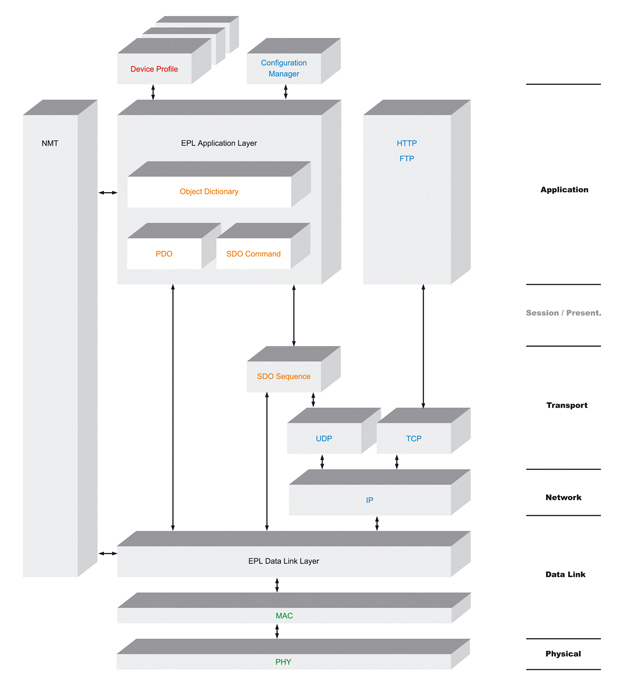
The success of Ethernet Powerlink
Although the discussion surrounding the industrial Ethernet solutions are too often centered in topical academic as the correct method and faster technology, the market in the long run will only accept solutions that are open, tested, easy to use, future-oriented and capable of ensuring investment for many yearsforming thus the standards and support for interoperability. Users have become extremely cautious with the properties of the system since that can be unpredictable units are not easy to solve. The success of Ethernet Powerlink is open accessibility to technology and its development of transparent using concepts and ideas in all different areas of application. Countless applications in machinery and production systems, measuring technology, transport industry and energy production confirm this way.






















